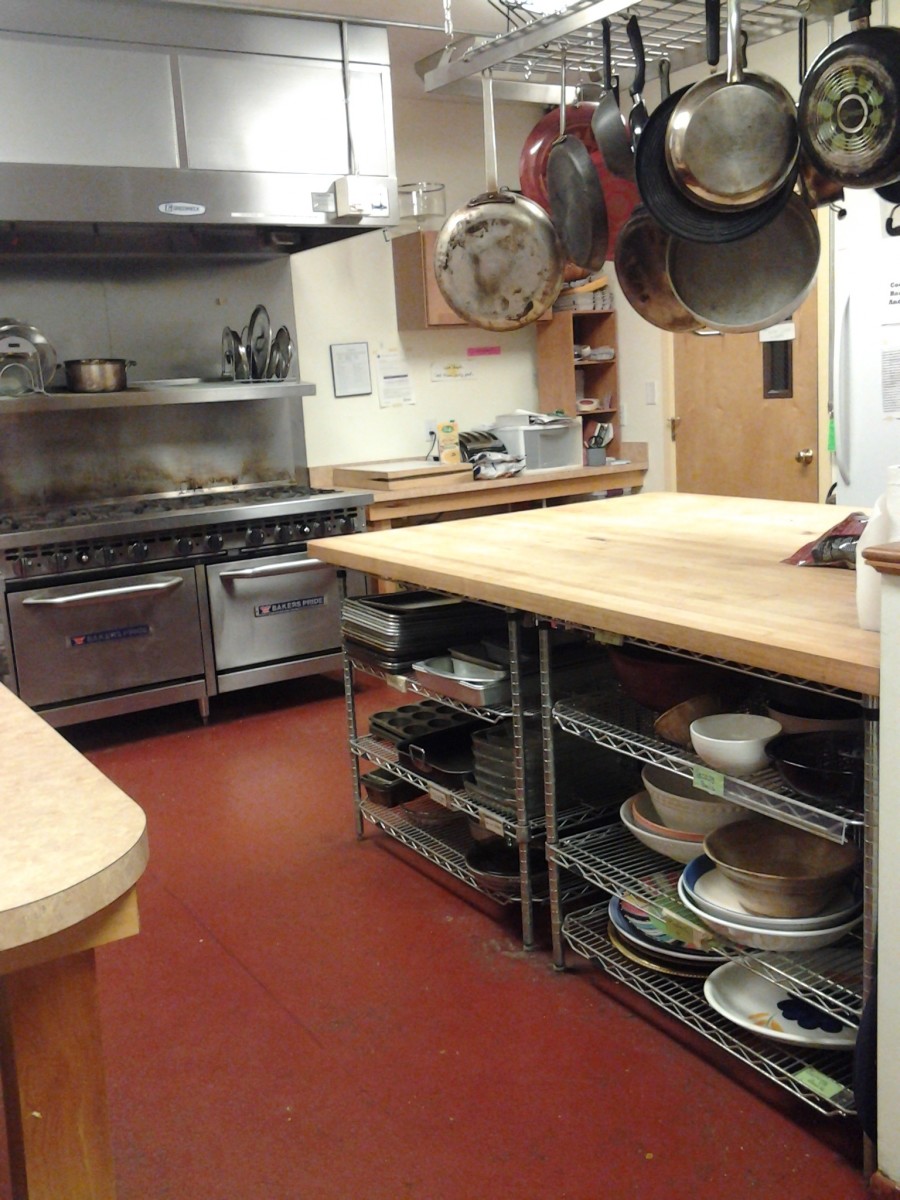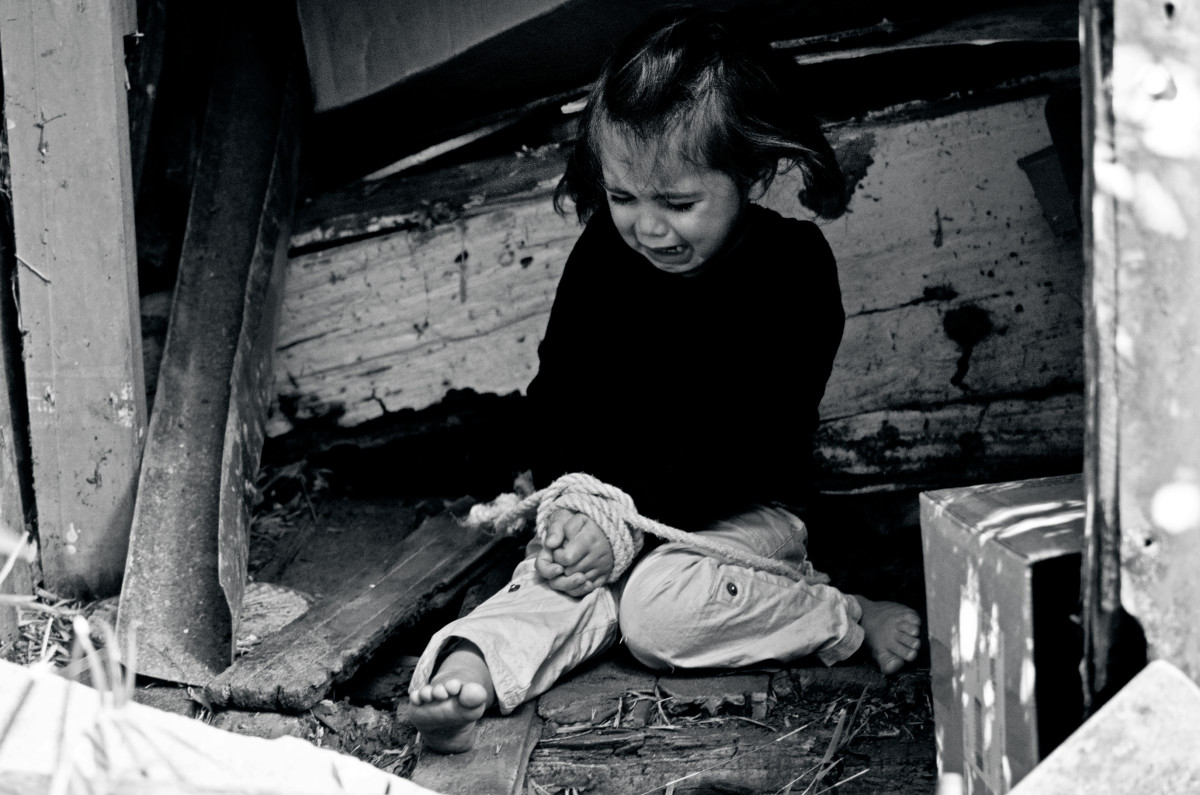Fight Hunger in Your Community
I grew up in a working class home in the Detroit area. My dad was a tool and die maker; my mother worked part time at the public library. For reasons I never clearly understood, it seemed every winter my dad was either laid off or his union went on strike. Like many other working class families then, my parents temporarily would receive food stamps to help with their grocery bill.
With six kids to feed and never an extra dime to spare, my mother came up with different ways to feed her brood. Creamed tuna on toast was one dinner I remember – canned tuna and green peas dumped into a white sauce served over toast. Not bad, but nothing I ever made once I grew up.
Sometimes we had breakfast for dinner. If it were scrambled eggs, I would not have minded; I sometimes make that for myself if I am home alone for dinner. But one item my mom made for us that I refuse to eat for dinner to this day – and don’t even really like for breakfast – is pancakes. I hated having pancakes for dinner!
As I grew up, moved out and began to donate to various charitable causes, organizations focused on feeding people became the ones I supported most frequently. I make it a point to contribute canned goods to any food drive that comes up. I donate as generously as I can to America’s Second Harvest (now called Feeding America). And La Vista, the organic farm I belong to, donates excess produce each week to the Alton Crisis Food Center as part of our mission. In 2009 we donated nearly 4,000 pounds.
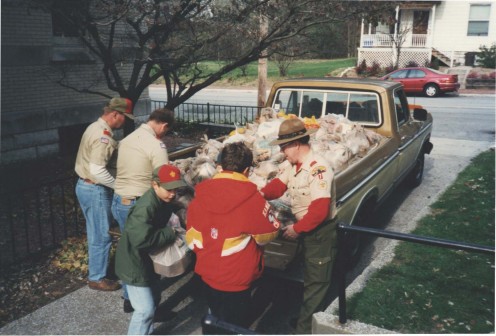
Food insecurity leaves people hungry
Food insecurity refers to the USDAs measure of a lack of access to enough food for an active healthy life for all household members and limited or uncertain availability of nutritionally adequate foods.
In Illinois, nearly 1.5 million residents, including more than 600,000 children, were “food insecure” and turned to soup kitchens and food pantries at some point in 2009.
One local business, Freer Auto Body, has sponsored Operation Kid Meals each spring for the past four years. Drop-off boxes are placed around town to collect “kid-friendly” food and snacks that need little or no cooking. Many children rely on school breakfasts and lunches for meals to supplement dinner at home. Or perhaps they are in place of dinner at home. And when school is out for the summer, they go hungry.
Hunger never takes a break. No matter the time of year, people are going hungry. A recent study indicates the numbers have risen over the past couple years. Hunger in America 2010 was conducted by Feeding America. It showed that their network of food banks is feeding 1 million more Americans each week than they were in 2006.
The number of clients the Crisis Food Center in Alton serves increased 34% between 2009 and 2001. Assistance to two of the most vulnerable demographic groups - children under age 6 and seniors - increased 44% and 52% respectively.
Feeding America facts for Missouri and Illinois
Feeding America’s website has an interactive map with data from 2009 and 2010. Because I live across the Mississippi River from St. Louis Missouri, I looked at information for both states.
Overall
| Children
| |
|---|---|---|
National
| 17.1%
| 22.7%
|
Missouri
| 16.1%
| 21.6%
|
Illinois
| 15%
| 22.2%
|
.
Test your hunger knowledge
Take Feeding America's quiz to see how much you know about hunger in America. I got 100% -- what about you?
Map the meal gap
The Feeding America website has an interactive map showing food insecurity in each of the 50 states. Click on your state to find out the overall and child food insecurity rates.
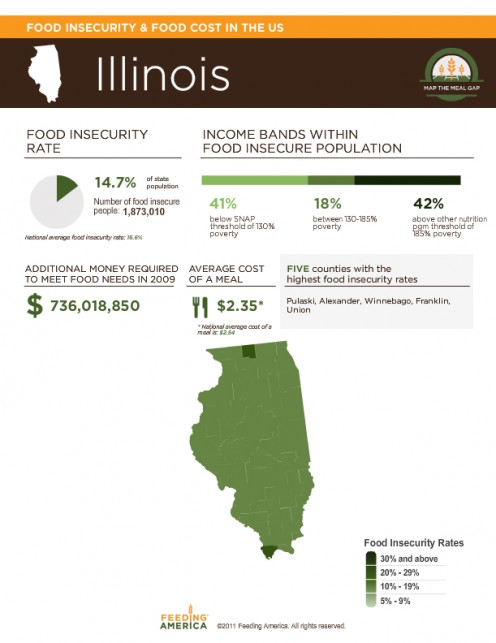
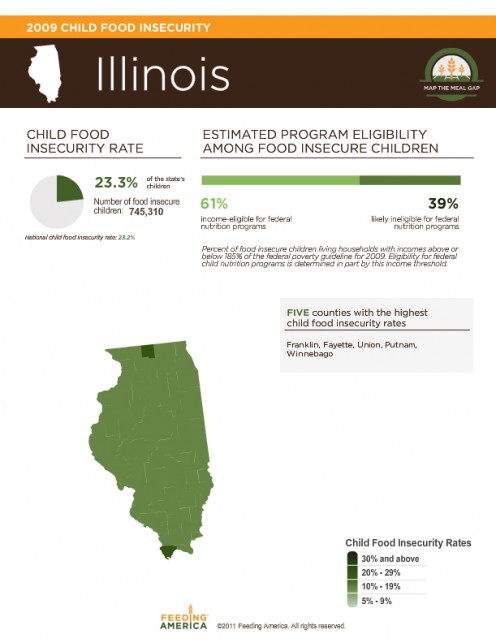

What can you do?
There are a number of steps you can take to help alleviate hunger in your community.
- Donate to a food drive or sponsor one. Instead of having your guests bring a gift to a birthday or dinner party, ask them to bring a non-perishable food item for the local food pantry.
- Volunteer your time at a local food bank. Non-profits with tight budgets are always in need of help.
- Organize a fundraiser that will benefit your local food bank. For the past few years, the Alton Crisis Food Center and the Jacoby Arts Center have hosted the Empty Bowls Project. For a donation, attendees receive a handcrafted bowl with a simple lunch. The bowls serve as a reminder of the empty bowls in the community.
- Check your state income tax form. Some states, such as Illinois, allows taxpayers to make donations directly from their refunds to a specific list of organization.
- Try living on $5 a day for one week. That’s about the average amount of money a person on food stamps has available for food.
- Call your member of Congress and urge him to support legislation helping people struggling with hunger.
- Teach your children that healthy food matters for all of us, including those in need.
- Raise awareness of hunger in your community by writing a letter to the editor of your local newspaper.
- Prepare for the unexpected. Prepare two emergency food boxes – keep one for your family and give one to a family in need, in case of a disaster.
- Support local colleges and universities whose students may be sponsoring a National Hunger and Homelessness Awareness Campus Food Drive in mid-November.
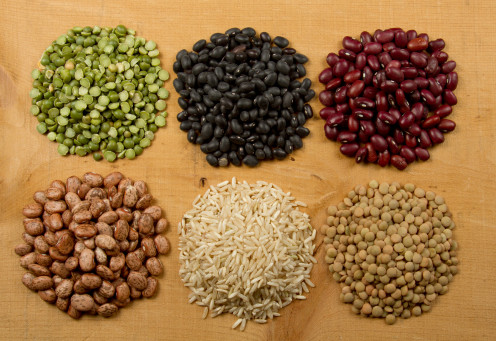
What to donate to a food pantry
I remember interviewing the director of the Alton Crisis Food Center a couple years ago. In the course of our conversation, she mentioned that someone had donated a can of vegetables that was obviously long past it's shelf life. This brought up what food pantries need most.
Cash is the number one item food banks would like donated. With the power of bulk purchases behind them, the dollar you give them can go further than if you had spent that $1 on a can of tuna.
Usually when people donate food items it's because they want the personal connection and feeling of satisfaction they get from feeling like they had a direct impact on someone's life. If you prefer to donate nonperishable items, consider the following:
- Proteins: Canned meats, fish or substantial soups, peanut butter and dried beans and dried milk are all good choices.
- Carbohydrates: Rice, hot cereals, noodles, pasta.
- Canned vegetables and canned and dried fruits. Fruit juices are also nice to include.
- Consider, too, non-food items such as laundry detergent and toiletries such as soap and shampoo. Diapers and wipes are always welcome.
Don't donate perishable goods unless you've made arrangements with the pantry ahead of time. Don't donate rusty, unlabeled cans. If you wouldn't feed it to your family, why would someone else want to?
No step is too small to take in the fight against ending hunger and no donation is ever turned away, so please consider the less fortunate in your community.


